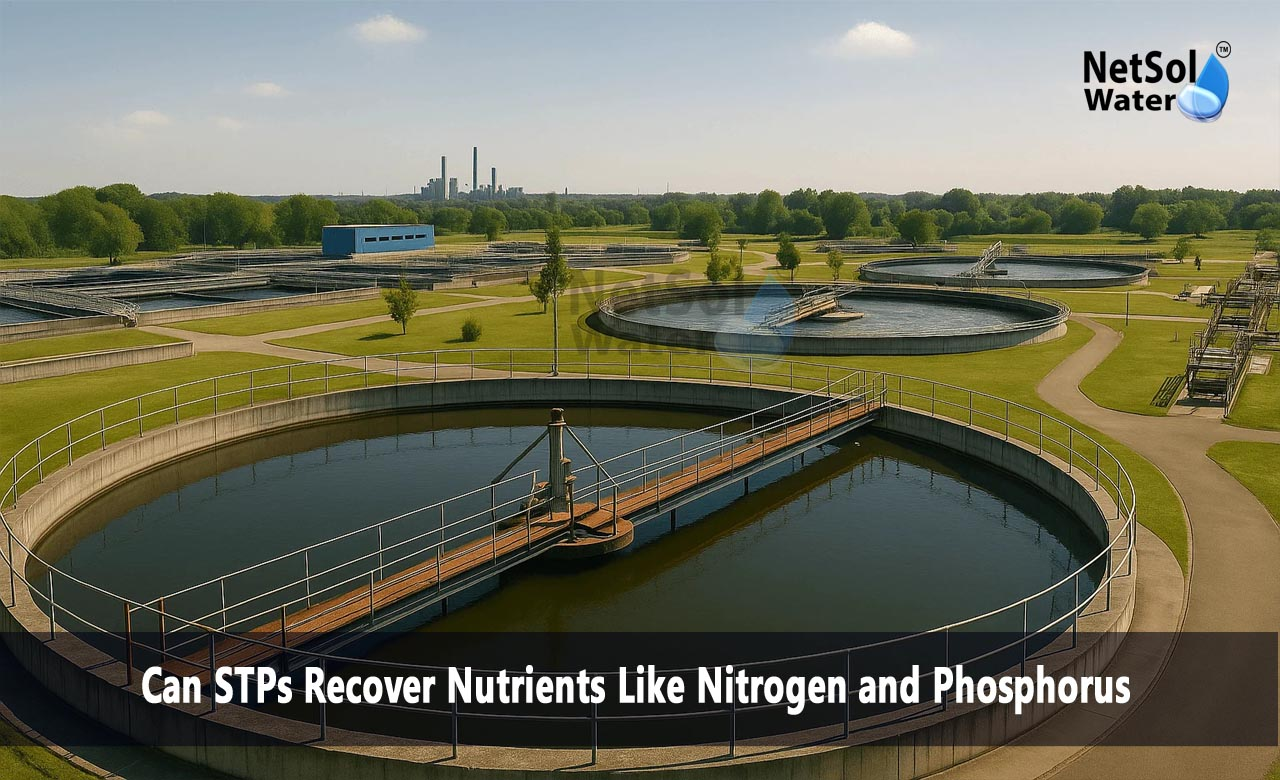Can STPs Recover Nutrients Like Nitrogen and Phosphorus?
Since keeping wastewater clean benefits the environment, sewage treatment plants are necessary. Besides cleaning it, modern STPs also work to get value from the nutrients found in sewage. It is often wondered whether STPs recover nutrients like nitrogen and phosphorus. The short answer is yes and both farmers and the environment can gain benefits.
How Nutrient Recovery Benefits Us?
Growth of plants is greatly promoted by nitrogen and phosphorus. They are used in many fertilizers to help grow plants. When allowed into rivers and lakes without being managed, the nutrients found in wastewater can cause algae blooms that ruin aquatic life and make water unsafe.
For this reason, it is important to find methods for taking out these nutrients from sewage. Over the past few years, a lot of research has looked at finding ways for STPs recover nutrients like nitrogen and phosphorus, so they can be reused.
Read: Sewage Treatment Plant Manufacturer in Noida
Where Do STPs Get Nitrogen and Phosphorus After Processing?
Biological Processes
A few STPs let naturally occurring bacteria use nitrogen as food and make it into non-hazardous nitrogen gas. These two processes efficiently get rid of nitrogen from the wastewater.
Other activities in the process allow phosphorus to settle out in a form called sludge which is simple to separate and reuse.
Chemical Precipitation
In this process, chemicals are introduced into the wastewater that are attracted to phosphorus and form a solid substance. The solid can then be extracted and applied in fertilizers.
Struvite Crystallization
Some STPs now use the method of producing struvite which is a crystalline mix of magnesium, ammonium and phosphate. Because its release of nutrients is gradual, struvite stands out as a great choice for STPs to recover nitrogen and phosphorus.
Removing the Sludge from Wastewater
Sludge produced by sewage treatment usually contains nitrogen and phosphorus. Because of its nutrient content, farmers may use dewatered sludge as soil conditioner or for nutrient recovery.
Benefits of Recovering Nutrients from STPs
Because we know STPs can recycle nitrogen and phosphorus, we see the process is beneficial in various ways.
· Keeping nitrogen and phosphorus out of rivers and lakes prevents pollution of water, algae growth and damage to river and lake creatures.
· Using nutrients from sewage as fertilizer helps farmers reduce the need for synthetic fertilizers which are mostly made from resources that can’t be replaced.
· Nutrient recovery gives municipalities the opportunity to cut their sewage treatment costs and profit through sales of the recovered products., we see the process is beneficial in various ways.
· Sustainability promotes a circular economy — an economy where waste is recycled rather than dumped, resulting in a healthier world.
Challenges to Nutrient Recovery
Despite the numerous advantages of nutrient recovery, there are some challenges:
Cost of sophisticated technology: Installation of equipment for struvite recovery or chemical precipitation may be costly.
Handling and storage: Recovered products such as struvite or treated sludge require proper storage and distribution systems.
Public awareness: Not everybody is aware that wastewater can be safely converted into fertilizer. Education and trust are necessary.
However, several STPs worldwide are achieving significant progress in resolving these problems.
The Future of Nutrient Recovery in STPs
In the future, nutrient recovery will be a standard inclusion in the design of new sewage treatment plants. As the costs of technology go down and knowledge increases, using STPs to safely and efficiently pull nitrogen and phosphorus from wastewater will be standard.
Improving how we recover information is still being worked on and the cost and timing involved have improved. Groups supporting the environment and government bodies are speeding up this process by granting funds and setting laws in favor of nutrient recovery.
Conclusion
Can STPs recover nutrients like nitrogen and phosphorus? Yes! Using advanced biology, chemicals and technology, waste from sewage plants can now be used as a useful resource. In addition, this is good for the environment as well as both farmers and sustainable practices.
With regard to the future, how STPs manage to reclaim nitrogen and phosphorus will be key to our waste management and protecting natural resources. It changes waste into a green alternative.
Do you need an advice or assistance on selecting the best water and waste water treatment unit? We have solutions for all your problems!
Let us know your problem, our experts will make sure that it goes away.
For an assistance or related query,
Call on +91-9650608473 or write us at enquiry@netsolwater.com



